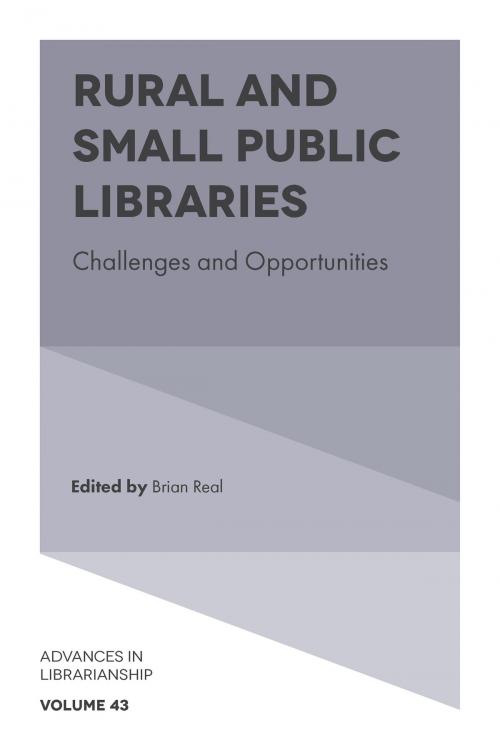Rural and Small Public Libraries
Challenges and Opportunities
Nonfiction, Reference & Language, Language Arts, Library & Information Services, Reference| Author: | ISBN: | 9781787432536 | |
| Publisher: | Emerald Publishing Limited | Publication: | November 17, 2017 |
| Imprint: | Emerald Publishing Limited | Language: | English |
| Author: | |
| ISBN: | 9781787432536 |
| Publisher: | Emerald Publishing Limited |
| Publication: | November 17, 2017 |
| Imprint: | Emerald Publishing Limited |
| Language: | English |
Rural and small public libraries provide invaluable services to their communities. These information institutions operate in areas that, when compared to national averages, have poor broadband accessibility and weaker connection speeds, low home internet adoption rates, higher unemployment rates, and less per capita access to doctors and other healthcare providers. Public libraries help to bridge these divides and help to mitigate the impact of these geographic and socioeconomic disadvantages. However, librarians are only able to do so much when they are funded by limited, primarily local revenues and are not able to achieve economies of scale that come with larger service population bases. Thus, this volume begins by defining the challenges that rural and small libraries face before shifting to an analysis of ways that these obstacles can be overcome or mitigated. Building off of this foundation, the authors explore ideas for enhancing community partnerships and outreach, using rural and small public libraries as centers for local cultural heritage activities, and training rural public librarians to better serve their publics. The authors of this volume bridge the gap between academic research and practical application, creating a volume that will allow rural librarians, trustees, and their allies to argue for greater support and enact change to benefit their service communities.
Rural and small public libraries provide invaluable services to their communities. These information institutions operate in areas that, when compared to national averages, have poor broadband accessibility and weaker connection speeds, low home internet adoption rates, higher unemployment rates, and less per capita access to doctors and other healthcare providers. Public libraries help to bridge these divides and help to mitigate the impact of these geographic and socioeconomic disadvantages. However, librarians are only able to do so much when they are funded by limited, primarily local revenues and are not able to achieve economies of scale that come with larger service population bases. Thus, this volume begins by defining the challenges that rural and small libraries face before shifting to an analysis of ways that these obstacles can be overcome or mitigated. Building off of this foundation, the authors explore ideas for enhancing community partnerships and outreach, using rural and small public libraries as centers for local cultural heritage activities, and training rural public librarians to better serve their publics. The authors of this volume bridge the gap between academic research and practical application, creating a volume that will allow rural librarians, trustees, and their allies to argue for greater support and enact change to benefit their service communities.















